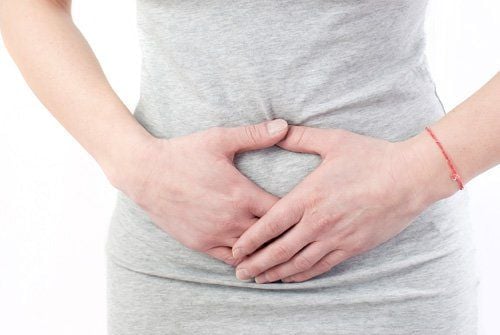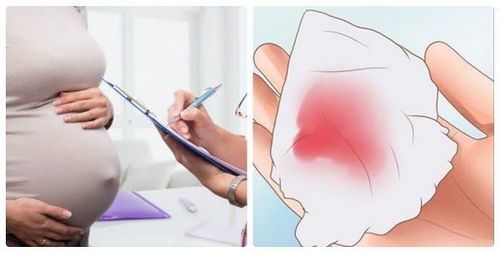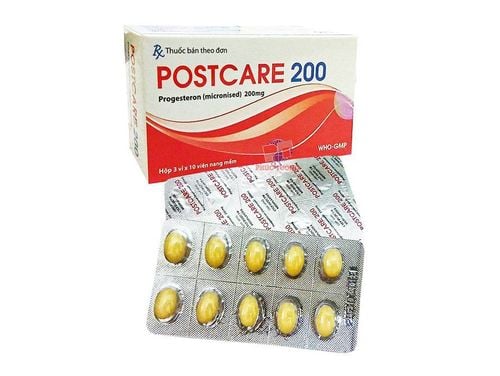This is an automatically translated article.
The article was professionally consulted by MSc, Dr. Trinh Thi Thanh Huyen - Obstetrician and Gynecologist - Department of Obstetrics and Gynecology - Vinmec Hai Phong International General HospitalThe uterus is an important part for a woman, helping to nourish and protect the fetus. However, in some cases, complete hysterectomy is needed to treat some serious medical conditions.
1. Total hysterectomy is cutting which parts?
The uterus is a part of the female reproductive system located in front of the rectum, behind the bladder, and between the two pelvises. The uterus is responsible for nurturing and protecting the fetus until birth. Hysterectomy is a fairly common surgery in obstetrics, performed when there are serious diseases in the uterine region, if not removed, women will have persistent pain, even life-threatening. . There are two main methods of hysterectomy: partial hysterectomy and total hysterectomy.
Có hai phương pháp phẫu thuật tử cung là cắt hoàn toàn và cắt bán phần
Total hysterectomy is the removal of the entire uterine mass, including the cervix and the body of the uterus. In some cases, it may be necessary to remove the fallopian tubes and the ovaries during a complete hysterectomy. This is called a complete hysterectomy with two appendages, and enough of the lower peritoneum is left to seal the pelvic cavity. Total hysterectomy can be indicated for the treatment of:
Gynecological cancers such as uterine cancer or cervical cancer. Depending on the individual case, it is possible to combine surgery with chemotherapy and radiation. Fibroids: Fibroids are round, solid masses that form from the muscular layer of the uterus. If the fibroid grows to a large size, it can cause pelvic pain and cause prolonged bleeding, compressing nearby organs such as the bladder, ureters, and stomach. This leads to serious complications. Depending on the patient's case, the doctor will consider between methods, removing the fibroids to preserve the uterus, partial hysterectomy or total hysterectomy. Endometriosis: A condition in which the inner lining of the uterus grows in the wrong place, not only in the uterus but also in other locations such as the cervix, ovaries, fallopian tubes... Surgery A total hysterectomy is often used when other treatments have not worked and the patient no longer wants to have children. After surgery, the recurrence rate is very low. Uterine infection, uterine prolapse, uterine rupture at birth or due to severe trauma. Placenta previa clung tightly to the cervix causing bleeding, even though the hypogastric artery was ligated, the bleeding could not be stopped. The pregnancy in the cervix has been aborted, the prolonged bleeding has been intervened by many methods such as suturing, electrocautery but not effective. With a hysterectomy, the patient will no longer be able to become pregnant. Therefore, when choosing the method of hysterectomy, the doctor must carefully weigh the benefits and risks, and must obtain the consent of the patient or the consent of the family in the case of surgery. Hysterectomy is a life-threatening obstetric emergency.
2. How is a total hysterectomy performed?
Complete hysterectomy is performed as follows:
Performer: Trained obstetrician and surgical assistant team Facilities: Major surgical instruments Patient preparation: If the patient has surgery Surgery due to obstetric complications should be prepared as in the case of emergency obstetric surgery.

Phẫu thuật cắt tử cung phải được thực hiện ở cơ sở uy tín
Steps to take:
Step 1: Use a knife to open the abdominal wall along the midline of the navel or the Pfannenstiel line. Stage 2: Clamp cut the uterine ligament - fallopian tube, lumbar ligament - ovary, pedicle, distal broad ligament, round ligament on both sides. Stage 3: Dissection of peritoneum - bladder Stage 4: Resection of posterior peritoneum and uterine ligament - sacrum and posterior peritoneum. Pull the uterus anteriorly, exposing the two uterine ligaments - sacral and posterior cervical. Use sharp scissors to cut the base of the two uterine ligaments - the same near the place of attachment at the cervix. Posterior peritoneal separation loops around the upper cervix and pushes down to the level of the vaginal incision. Stage 5: Clamp the vascular peduncles into the uterus, then clamp the uterine artery, clamp the branch of the vaginal artery. Stage 6: Perform a vaginal cut, cover with large surgical gauze. Surgeon used left hand to pull the uterus forcefully upwards, right hand used scissors to open with the anterior. Clip the anterior vaginal edge, cut around the vaginal and cervical attachment. Stage 7: Close the vagina with a needle and suture through the submucosa and vaginal mucosa. Stage 8: Ligation of the uterine pedicles with a curved needle and either long-dissolved or non-absorbable sutures, sutured into the tissue near the pedicle just below the clamp. Stage 9: Perform pelvic peritoneal coating. Stage 10: Close the abdominal wall. Depending on complete hysterectomy, it is very safe, but like other intra-abdominal surgeries, patients may experience complications after surgery such as:
Infection: Due to surgical instruments, the operating room has not been sterilized. carefully or because the patient is not well prepared. Bleeding: Due to the manipulation process, the thread must be loosely tied or the thread will slip at the vascular pedicles and vaginal apex. The bladder is injured because during surgery there is a suture on the bladder or cystectomy due to the manipulation of the peritoneum - the bladder is not good. Ligation or cutting into the ureter: Due to adhesion or pedicle ligation of the cervico-cervical artery performed at a position too far from the ectopic border of the cervix. After surgery, the patient will be given pain medication and antibiotics to fight infection. One day after surgery, the patient can walk again. The patient will be kept in the hospital for a few days to recover and monitor complications. Vaginal bleeding may occur for a short time after a hysterectomy, but if the amount of bleeding is as heavy as a menstrual period or other abnormalities are present, it is necessary to notify the doctor immediately. to be intervened.
There are many methods used for complete hysterectomy such as: laparotomy, transvaginal surgery, minimally invasive laparoscopic surgery,...
In which laparoscopic surgery has many outstanding advantages such as: patients recover quickly, reduce hospital stay, do not leave scars on the abdominal wall. However, this is a difficult technique, requiring modern equipment, highly qualified and experienced surgeons.
Vinmec International General Hospital is a prestigious address in the examination and treatment of gynecological diseases, including complete hysterectomy technique. With synchronously invested facilities, operating room with full modern laparoscopic surgery equipment to minimize the risk of hospital infection and postoperative complications, patients with minimal invasive disease should recover. Fast recovery, aesthetic factors are ensured because the scars left are very small, especially the safety of laparoscopic surgery is superior to other methods.
Please dial HOTLINE for more information or register for an appointment HERE. Download MyVinmec app to make appointments faster and to manage your bookings easily.













